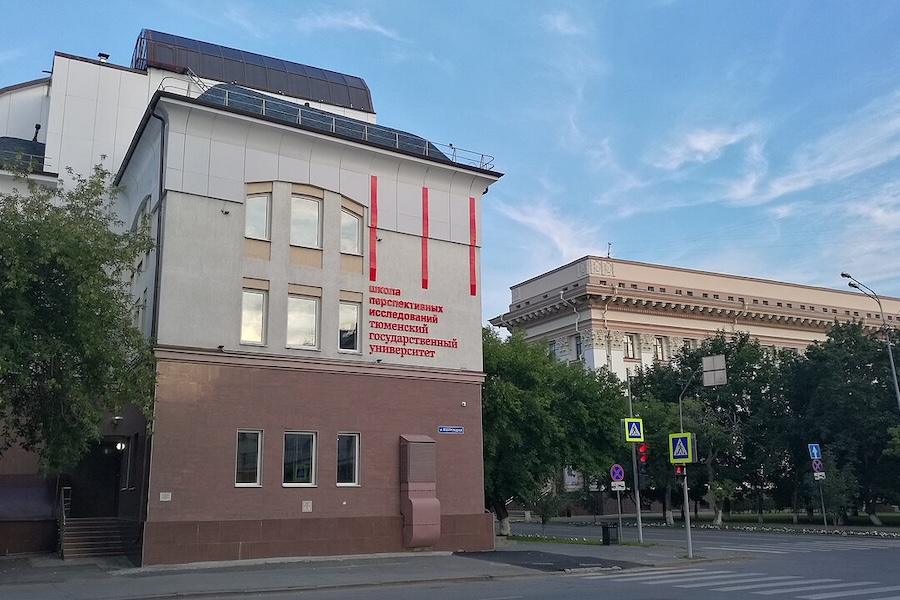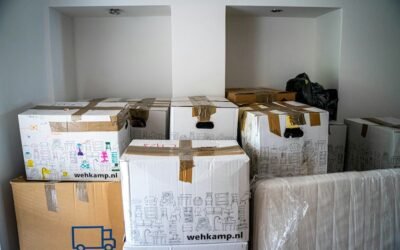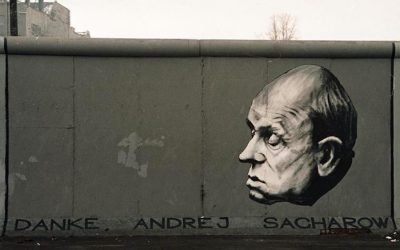Why didn’t Russia’s final liberal arts institute become the center of anti-war protests?
Victor Mokrushin
Photo: The vertical chain of command at the Tyumen Institute of Liberal Arts and Sciences began with Putin and ended with the director of the institute. Photo by RG72 – Own work, CC BY-SA 4.0, https://commons.wikimedia.org/w/index.php?curid=81425365
Individual Repression as the Final Stage
2022 is considered a turning point in the process of autocratization in Russia. The invasion of Ukraine marked the beginning of unprecedented prison sentences for protesting, private statements, and comments made on social networks.
But these violations of individual rights and freedoms are only the latest stage in the history of Putin’s repression. Before brutally suppressing brave individuals, the regime destroyed what these individuals had relied on: collective structures. As often happens, what was occurring in the political system as a whole was reflected in the (sub)system of higher education, and in one specific institution in particular.
How exactly was academic freedom destroyed before 2022? How did this affect the nature of anti-war protests at Russia’s last remaining liberal arts institute?
Building the Vertical, Destroying the Horizontal
After the dissolution of the USSR, universities were left to fend for themselves. The government could not finance them and did not want to supervise them.
Everything changed in the 2000s, when this supervision returned with increased funding. This was evident, for example, in the fact that rectors, who had previously been elected in most universities, began to be appointed by the Minister of Education. The state’s ambition to subordinate universities was enshrined in the requirements for participation in the “5-100” program: the rector of any participating university must have been appointed to the position.
The result of depriving collegiate structures of the power to elect rectors was the creation of a system in which the president appoints the minister of education, the minister appoints the rectors, and the rectors appoint the directors of institutes.
This explains the contradiction that occurred in March 2022, when most rectors of state universities signed a letter in support of the military action, while university staff signed petitions condemning the war and/or left Russia. By this point, rectors had been operating independently of their staffs for more than a decade. Politically motivated dismissals of teachers who spoke out against the regime were only the latest stage of repression.
Neo-Liberal Arts in State Universities
Even within an uncompromisingly vertical power system, enclaves of (relative) academic freedom were able to emerge—and persist after the start of a full-scale war. For example, within the framework of the “5-100” program, an experimental institute, the School of Advanced Studies (SAS), was opened at Tyumen State University.
Here, professors with Western degrees taught in English using the Liberal Arts system. It was 2017; the regime could afford to take the risk of gathering critical and politicized people in one place to improve its position in international academic rankings.
However, it soon became clear that behind the façade of progressiveness lurked a brutal neoliberal autocracy. And while short-term contracts and targeted repression in the SAS have already been made public, the destruction of collective structures has hitherto remained out of sight.
To understand the details and consequences of this process, we analyzed SAS regulations and conducted interviews with people who participated in these events. This analysis also helps illuminate why the institute neither became a major hub of anti-war protests nor was completely shut down.
“Direct Management”
It is no exaggeration to say that the power vertical at the Tyumen Institute of Liberal Arts and Sciences began with Putin and ended with the director of the institute. The statute establishing the SAS makes it clear that its creators did not envisage even minimal participation of teachers and students in co-management:
The general management of the School of Advanced Studies is carried out by the Director, Deputy Director, Head of the Academic Office and Advisor on Academic Positioning […] The direct management of the School of Advanced Studies is carried out by the director, appointed by order of the rector of the university […] The Director of the School of Advanced Studies reports directly to the rector of the university.
The repetition of the word “direct” is no accident, as evidenced by the fact that no collective structures—neither academic nor student councils—are mentioned in the document. Simply put, the very creation of such groups was seen as undesirable, leaving aside the influence they might exert on the functioning of the institute. This was demonstrated by the targeted repressions against teachers who tried to establish an academic council and students who registered a student council in 2022.
What did “direct management” look like in practice? In his farewell letter to the Class of 2022, dismissed SAS professor and sociologist Matvey Lomonosov explained:
[In addition to various committees at SAS] there are faculty meetings (a kind of analogue of the “academic councils” of other divisions of Tyumen State University), at which key issues are supposed to be discussed. However, these structures are not capable of ensuring collective decision-making. The committees very quickly turned into structures that carry out “tasks” from the administration. In the same way, faculty meetings turned into meetings at which teachers are simply notified of decisions made by the administration on key issues.
The lack of collective teacher and student structures allowed the director to censor students’ research work unimpeded, from “smart voting” and protest memes in Belarus to Liberal Arts in Russia.
With the consent of academic supervisors and the ethics committee, the director and his deputy forbade students to research topics related to contemporary politics. Students had nowhere to go for help protecting their academic freedom, because no one had authority over the director.
Anti-War Protests
Like many Russians, teachers and students at the Tyumen Institute of Liberal Arts and Sciences protested against the war from the beginning.
These protests were not planned, mass, or coordinated. Rather, they were individual, often spontaneous, and purely symbolic actions.
The nature of the protests was dictated by the fact that if there were repressive measures taken in response, neither teachers nor students could count on the support of any collective structures. As such, opponents of the war had neither the potential nor the organizational resources to mobilize supporters.
Of course, some teachers and students who opposed the war tried to unite. But attempts to create structures from scratch were met with either resistance from the administration, indifference from those around them, or both.
Thus, one of the teachers called on her colleagues to make a joint statement against the war. No one responded, for fear of their own safety. When the collective action did not materialize, the teacher decided to act individually: she informally dismissed her students during an anti-war demonstration taking place near the university.
Students created group chats to coordinate anti-war activities, such as posting flyers. These chats soon became accessible to the institute administration and the police, who began threatening the students. As a result, the students either took individual action or abandoned their attempts to protest altogether.
* * *
Both the creation and “survival” of a liberal arts institute in late Putin’s Russia only seem surprising until you take a closer look at the organization’s internal structure and place in the power hierarchy.
In a system where the president appoints the minister of education, the minister appoints rectors, and the rectors appoint institute directors, giving the latter unlimited powers means that any protest can easily be suppressed even before it arises.
The absence of collective structures, such as academic or student councils, leaves teachers and students unprotected in the event of repression and without a resource that could be mobilized to protest against injustice.
Nor is it difficult to violate academic freedoms in such an environment. Therefore, individual freedoms are inseparable from collective ones, just as academic freedoms are inseparable from political ones.





0 Comments